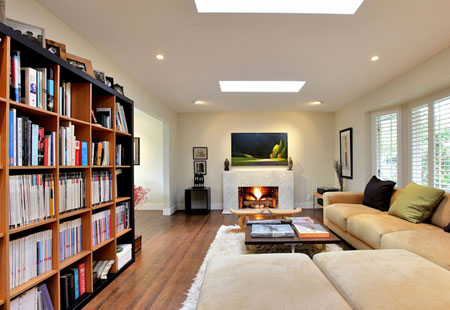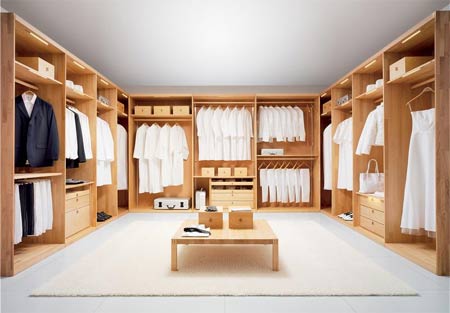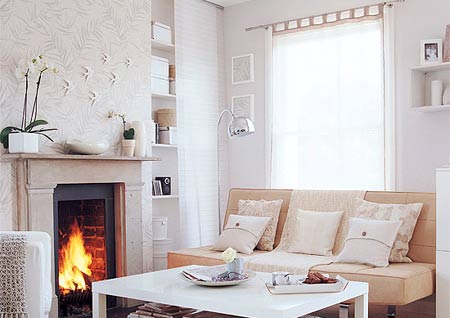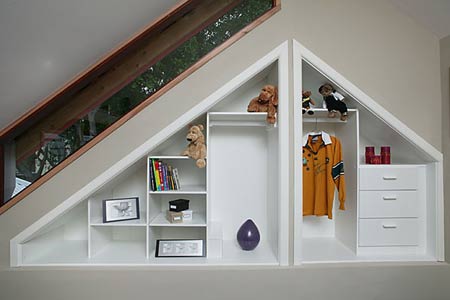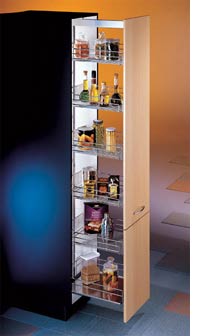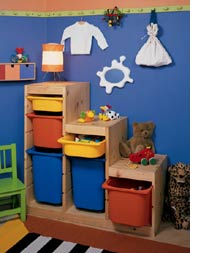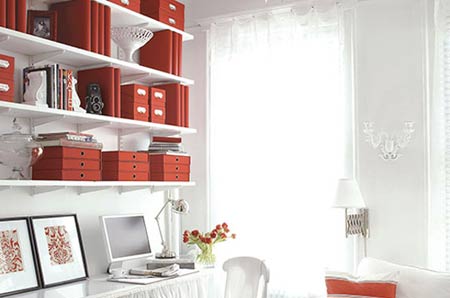More space for living
A home can never have enough storage – it always seems that the number of possessions we have in our homes is slightly more than there is room for in our cupboards.
Even with the best planning and careful use of space, circumstances can change and create extra demand for somewhere to conceal a freshly acquired supply of clutter. Simply taking up a new hobby or sport, or the addition of a lively youngster, can upset even the best-laid plans for keeping possessions under control.
You may think that you have filled every alcove with built-in cupboards and covered every wall with shelves from floor to ceiling, but you will be amazed at the number of opportunities offered for storage in the unlikeliest places. Even better use of your present storage facilities can often create extra space. So first of all, take a look around your house and carefully heck the storage you already have.
Using cupboards
Even though you have a lot of cupboards, you could be wasting space if you are not using them to their best advantage. For example, most wardrobes have a large gap between the floor and the bottom of the hanging clothes, which is simply wasted space. The floor will invariably be cluttered with messy piles of shoes that need sorting through whenever you need a pair. Yet the simple addition of a double shoe rack not only keeps shoes tidily in place, but also makes good use of previously wasted space.
Shirts and trousers can be stored conveniently in the same compartment of a wardrobe. By attaching one or two (or even more) multi-rod towel rails part of the way down the sides to hold trousers, you automatically free quite a lot of room on the ordinary rail both for shirts and a number of other clothes.
The backs of cupboard doors can often be put to good use for storing small items. For example, a plastic-covered spring wire fixed to the back of a wardrobe door is ideal for hanging ties and belts. A wood or plastic container, similar in form to a letter rack, could store gloves on the back of a wardrobe door, or be used in a kitchen cupboard to store all those fiddly items like bottles of food flavouring and sachets of bouquet garni.
Clip-on wire baskets can practically double the capacity of any cupboard, especially if the shelves are widely spaced. Move all the tall items to one side of a shelf and clip a basket to the shelf above on the other side. This is ideal used in a wardrobe to store underwear, and excellent in a larder for packets of soup, boxes of stock cubes and other small, light items. Not only does it use the space more efficiently, but it makes these elusive articles much easier to find.
Using odd corners
Alcoves are ideal for storage cupboards and shelves, and out-of-the-way spaces and unwieldy fixtures can often provide equally good storage opportunities. For example, a boxed-in bath wastes a certain amount of space at each of the corners. Yet by simply fitting doors, instead of a single panel, you provide a neat hideaway for cleaning equipment and toilet paper for example. Or adding a cabinet that can be modified to take all your bathroom clutter.
The space above the door is a good place for one or two shelves. Well above eye-level, it is ideal for storing awkward items, like suitcases, which are not in constant use. In the bathroom this is also a good place for keeping clean towels which, if they co-ordinate with the bathroom door, also provide a decorative and unusual feature.
The awkwardly shaped space under the stairs is rarely used to its best advantage. It frequently becomes a junk cupboard or, in an attempt to make use of the space, it is fitted with shelves which are often wasted because nothing fits properly into the triangular shapes at either end. In some homes, the area is devoted to a washing machine, freezer or other large domestic appliance and in others it houses nothing more useful than a table or a plant. However, none of these makes maximum use of the space.
Instead of one large cupboard or a row of fitted shelves, it would be more sensible to build compartments under the individual stairs across their full width.
These can be used for storing a considerable quantity of unwieldy articles, such as sports equipment, garden umbrellas and cushions for outdoor furniture, for which it is often difficult to find a home. The compartments can be constructed to fill the entire space or can be combined with shelves and cupboards. The cupboards can be located in the centre of the area, for a more practical shape. Alternatively, build the compartments around the space occupied by the washing machine or fridge freezer.
Movable storage
Almost every house has gaps and spaces which are too small or inaccessible for conventional storage systems. This is particularly true of kitchens, where appliances and standard commercial units do not completely fill the entire wall. Although infill panels prevent the gaps looking unsightly and becoming dust traps, they waste precious space which could often be utilised.
The solution is a movable storage unit, which can be made very easily to fit the gap precisely. Construct it like conventional bookshelves, remembering that it will be sliding into the gap sideways.
Make the unit slightly narrower than the gap and face it with a panel to match the kitchen furniture that abuts it. Fit the unit with castors so that it is easy to slide in and out, but remember to take the size of the castors into consideration when you are calculating the height. To prevent things falling out as you move the unit, insert small restraining rails on each side of the shelves.
Commercially-made, movable storage units are also available in wood, metal and most popularly, plastic, in a variety of colours and a range of shapes. Some types are even stackable for extra space saving. Cubes, tubs, shelves and trays, all on castors and in different heights, can cater to most needs.
Economy storage ideas
If, on the other hand, you have a limited budget or for some reason, do not want to buy conventional storage units, versatile plastic and a little ingenuity may provide the answer. For example, washing-up bowls make surprisingly practical and eye-catching bookshelves.
The simplest technique is to screw a row of square bowls, side-by-side, directly on the wall. Position them so that the open top faces outwards. Another possibility is to stack half a dozen rectangular bowls within a framework of brightly coloured, plastic piping, attached at either end to the ceiling and floor. Set the bowls at an angle so that each one slopes back.
Similarly, square plastic tubs make excellent CD holders when turned on their sides. An equally inexpensive storage unit can be made from plastic buckets attached to the back of an ordinary door, with the added advantage of saving space. Turn the buckets sideways, so that the open ends face outwards and screw them to the door in pairs.
Another inexpensive alternative would be to use baskets with a fairly rigid weave. These could store towels on the back of a bathroom door or table linen and tea cloths on the back of a kitchen door.
Stacks of plastic 'in' and 'out' trays, such as those used in offices, can also be put to good use in the home. All types are fairly inexpensive to purchase and provide practical and space-saving units for inside cupboards. They can be used to great effect to store nail polish, make-up, soap, shaving equipment and other cosmetic items. Or they can be used in the kitchen to store food colouring, herbs and spices and other flavourings.
images - mobileffe

